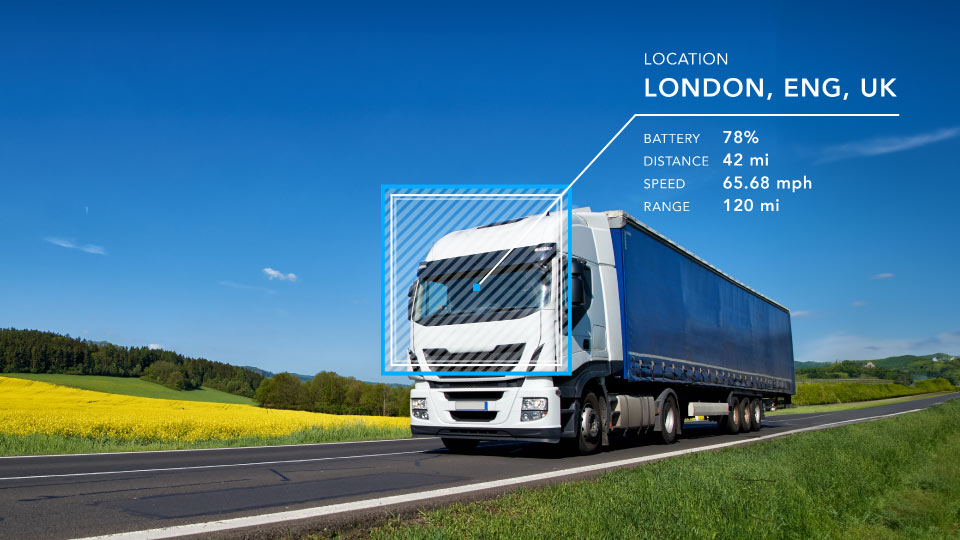The enhanced Direct Vision Standard (DVS) and what it means for fleet operators
Navigate the Direct Vision Standard (DVS) for HGVs and learn how to upgrade your fleet with Geotab's solutions to meet the Progressive Safe System requirements.


The Direct Vision Standard (DVS) and safety permit scheme for heavy goods vehicles (HGVs) requires operators to obtain a safety permit for any truck over 12 tonnes gross vehicle weight that enters or operates in most of Greater London.
Read this article to learn all about the current standard, and the changes that will affect your fleet as it’s enhanced in October 2024, plus how Geotab’s solutions can help you upgrade your vehicles in line with the Progressive Safe System requirements.

Direct vision and road safety
The DVS has been in operation since October 2020, forming part of the Mayor of London’s “Vision Zero” plan to eliminate all deaths and serious injuries on London's transport network by 2041. The standard measures how much an HGV driver can see directly through their cab windows, indicating the level of risk to vulnerable road users including pedestrians, cyclists and motorcyclists.
Trucks are given a star rating based on this view, from 0 (poor vision) to 5 stars (excellent vision). Currently, all HGVs need to have at least a 1 star rating to be able to operate in Greater London. If a vehicle is zero star rated, they must be fitted with “Safe System” improvements to improve indirect vision (including Class V and VI mirrors, a fully operational camera monitoring system and sensor system with driver alerts), to warn road users of intended manoeuvres, and to minimise the physical impact of a hazard.

How the DVS guidelines are changing
From the 28th October 2024, HGVs over 12 tonnes will need to have a three-star rating, or be fitted with a “Progressive Safe System”, to operate in Greater London.

If any vehicles in your fleet don’t meet the new 3 star standard, then you will need to make improvements to improve their overall safety so that they meet Progressive Safe System requirements. This will ensure that your vehicles can be granted an HGV safety permit.
Summary of Progressive Safe System (PSS) requirements
All HGVs rated below three stars will need to install the Progressive Safe System from October 2024. These industry-recognised safety measures can be retrofitted to existing trucks and are broken down into several categories.


Improving indirect vision
To completely eliminate the remaining vehicle blind spot at the nearside, a camera monitoring system (CMS) must be fitted, regardless of whether mirrors are fitted. A mirror replacement camera system may also be used as an alternative to fitting Class V and VI mirrors.
The new CMS guidance allows for the use of combined blind spot and moving off information systems, to give the driver a wider field of vision, and reduce their cognitive workload. The blind spot information system (BSIS) must eliminate any remaining blind spots around the vehicle, providing a visual alert of an approaching vulnerable road user to prevent collisions within the blind spot area.
Additional guidance relates to the use of sensors down the nearside of rigid vehicles to prevent left turn collisions, ensuring full coverage to detect vulnerable road users, while not activating in relation to stationary vehicles or roadside furniture. For articulated vehicles, sensors must be fitted to the tractor unit, and are also recommended for the trailer.
The CMS must also consist of Moving Off Information Systems (MOIS) sensors, fitted to the front of a vehicle to prevent collisions at the frontal blind spot zone when a vehicle moves off from rest.
Warning vulnerable road users of intended manoeuvres
All vehicles must be fitted with an audible vehicle manoeuvring warning to warn vulnerable road users of an intended left turn.
Warning signage
External pictorial stickers and markings must be displayed to provide adequate visual warning to vulnerable road users of the hazards present around the vehicle. These requirements remain unchanged from the current standard.
Minimising the physical impact of a hazard
Vehicles must have side under-run protection fitted to both sides.
For more information on the Progressive Safe System requirements, and the UNECE regulations that such systems must comply with, visit TFL’s Direct Vision Standard and HGV Safety Permit page.
How Geotab can help
With only one year remaining until operators will need to have updated HGV safety permits to operate their vehicles within Greater London, vehicle retrofitting will have to start taking place soon. These changes will apply to any vehicle that currently scores under 3 stars.
The MyGeotab fleet management software is integrated with several DVS-compliant solutions today and will continue to be once the enhanced standard comes into action in October 2024. Geotab’s Marketplace features the current list with new solutions being added regularly, speak to your PAM now for more information.
Subscribe to the Geotab Blog

Sales professional dedicated to the simplification of complex solutions in the transport industry.
Table of contents
Subscribe to the Geotab Blog
Related posts

Strategic Implementation of Telematics for Optimising Last-Mile Delivery Operations
April 1, 2025
2 minute read
.jpg)

Data-Driven Innovations in Fleet Management: highlights from Geotab Mobility Connect 2024
November 28, 2024
3 minute read


2030 or 2035, the UK Needs Meaningful Action on EVs Now
September 6, 2024
2 minute read

Driving smarter: Insights from Geotab’s “Taking Charge” Report
August 8, 2024
2 minute read
